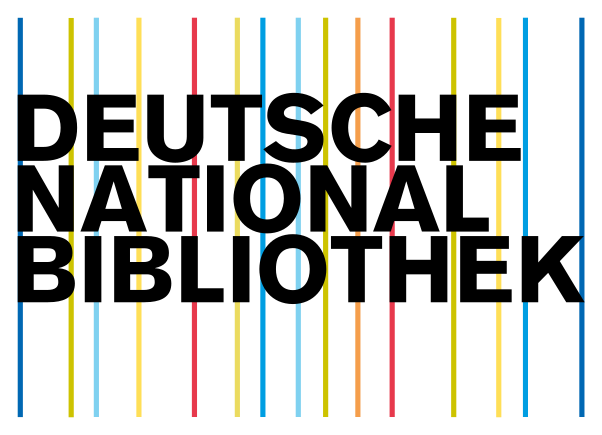RELM: A Machine Learning Technique for Brain Tumor Classification
DOI:
https://doi.org/10.5281/zenodo.4018991Keywords:
Data Pre-processing, Normalized-GIST Descriptor, Principal Component Analysis, RELM, Classification of brain tumorAbstract
Brain tumor is called as abnormal growth of a group of malicious or benign cells which causes a mass of unwanted cells in the central processing unit of our body, the brain. There are many existing automated techniques to detect them. The detection of these cells is a tedious task and requires great proficiency in order to provide a great deal of cure to them. In the proposed approach, we present an automated brain tumor detection system which not only detects them but also classify them into types based on the features extracted. The brain MRI images needs to be processed and normalized before the system performs the further steps. The pre-processing is key step since it directly affects the quality of classification. Advancing to the next step, the proposed approach uses Principal Component analysis with Normalized GIST (PCA-NGIST) method to extract the features from the brain MRI images. The extracted features, from the datasets are fed to a classifier algorithm for the network to be trained using these features. The training algorithm used in our case is Regularized Extreme Learning Machine (RELM). A test images from the partitioned dataset is given as an input for detection of tumor and further classification if tumor exists. By utilizing the proposed approach, the accuracy percentage of classification rate would be higher.
Downloads
References
Dandıl E, Çakıroğlu M, Ekşi Z. Computer-aided diagnosis of malign and benign brain tumors on MR images. In: ICT Innovations 2014; 18-23 September 2017; Skopje, Macedonia. pp. 157-166.
Pereira S, Pinto A, Alves V, Silva CA. Brain tumor segmentation using convolutional neural networks in MRI images. IEEE T Med Imaging 2016; 35: 1240-1251.
Sompong C, Wongthanavasu S. Brain tumor segmentation using cellular automata-based fuzzy c- means. In: 13th International Joint Conference on Computer Science and Software Engineering (JCSSE); 13-15 July 2016; Khon Kaen, Thailand. pp. 1-6.
Sehgal A, Goel S, Mangipudi P, Mehra A, Tyagi D. Automatic brain tumor segmentation and extraction in MR images. In: Conference on Advances in Signal Processing (CASP); 9-11 June 2016; Pune, India. pp. 104-107.
Banday SA, Mir AH. Statistical textural feature and deformable model based MR brain tumor segmentation. In: 6th International Conference on Advances in Computing, Communications and Informatics (ICACCI); 21-24 September 2016; Jaipur, India. pp. 657663.
Praveen GB, Agrawal A. Multi stage classification and segmentation of brain tumor. In: 3rd International Conference on Computing for Sustainable Global Development (INDIACom); 16- 18 March 2016; New Delhi, India. pp. 1628-1632.
Ahmadvand A, Kabiri P. Multispectral MRI image segmentation using Markov random field model. Signal, Image and Video Processing 2016; 10: 251-258.
Abbasi S, Tajeripour F. Detection of brain tumor in 3D MRI images using local binary patterns and histogram orientation gradient. Neurocomputing 2017; 219: 526-535.
Gao XW, Hui R, Tian Z. Classification of CT brain images based on deep learning networks. Comput Meth Prog Bio 2017; 138: 49-56.
Zhao L, Jia K. Deep feature learning with discrimination mechanism for brain tumor segmentation and diagnosis. In: International Conference on Intelligent Information Hiding and Multimedia Signal Processing (IIH-MSP); 23-25 September 2015; Adelaide, Australia. pp. 306-309.
Gao XW, Hui R. A deep learning based approach to classification of CT brain images. In: SAI Computing Conference (SAI); 13-15 July 2016; London, UK. pp. 28-31.
Işın A, Direkoğlu C, Şah M. Review of MRI- based brain tumor image segmentation using deep learning methods. Procedia Comput Sci 2016; 102: 317-324.
J. Paul, "Deep Learning for Brain Tumor Classification," M.S. thesis, Nashville, Tennessee, May 2016.
N. Abiwinanda, M. Hanif, S. T. Hesaputra, A. Handayani, and T. R. Mengko. "Brain Tumor Classification Using Convolutional Neural Network." In World Congress on Medical Physics and Biomedical Engineering 2018, pp. 183-189. Springer, Singapore, 2019.
A. Ari, and D. Hanbay. "Deep learning based brain tumor classification and detection system." Turkish Journal of Electrical Engineering & Computer Sciences 26, no. 5 (2018): 2275-2286.
Huang GB, Bai Z, Kasun LLC, Vong CM. Local receptive fields based extreme learning machine. IEEE Comput. Intell. M 2015; 10: 18-29.
Huang GB, Zhu QY, Siew CK. Extreme learning machine: theory and applications. Neurocomputing 2006; 70:489-501.
A. Oliva & A. Torralba, Modeling the shape of the scene: A holistic representation of the spatial envelope. International journal of computer vision, 42(3) (2001):145-175.
Gumaei, Abdu, Rachid Sammouda, Abdul Malik S. Al-Salman, and Ahmed Alsanad. "An Improved Multispectral Palmprint Recognition System Using Autoencoder with Regularized Extreme Learning Machine." Computational Intelligence and Neuroscience 2018 (2018).
Gumaei, Abdu, Rachid Sammouda, Abdul Malik S. Al-Salman, and Ahmed Alsanad. "Anti- spoofing cloud-based multi-spectral biometric identification system for enterprise security and privacypreservation." Journal of Parallel and Distributed Computing 124 (2019): 27-40.
T. S. Lee, Image representation using 2D Gabor wavelets, IEEE Transactions on pattern analysis and machine intelligence 18(10) (1996): 959-971.
J. Yang, D. Zhang, A. F. Frangi, and J.-Y. Yang, Two-dimensional PCA: a new approach to appearance-based face representation and recognition, IEEE Transactions on Pattern Analysis and Machine Intelligence 26(1) (2004):131–137.
Gumaei, Abdu, Rachid Sammouda, Abdul Malik Al-Salman, and Ahmed Alsanad. "An Effective Palmprint Recognition Approach for Visible and Multispectral Sensor Images." Sensors 18, no. 5 (2018): 1575.
G. Huang, X. Ding and H. Zhou, Optimization method based extreme learning machine for classification, Neurocomputing 74(1-3), (2010).
G. B. Huang, H. Zhou, X. Ding, and R. Zhang, Extreme learning machine for regression and multiclass classification, IEEE Transactions on Systems, Man, and Cybernetics, Part B (Cybernetics) 42(2) (2012): 513-529.
J. Cheng. (2017). Brain Tumor Dataset (Version 5). Retrieved from https://doi.org/10.6084/m9.figshare.1512427.v5.
J. Cheng, Huang, W., Cao, S., et al. (2015). Classification via Tumor Region Augmentation and Partition. PLoS One, 10(10).
Downloads
Published
How to Cite
Issue
Section
URN
License
Copyright (c) 2020 Perspectives in Communication, Embedded-systems and Signal-processing - PiCES

This work is licensed under a Creative Commons Attribution 4.0 International License.






